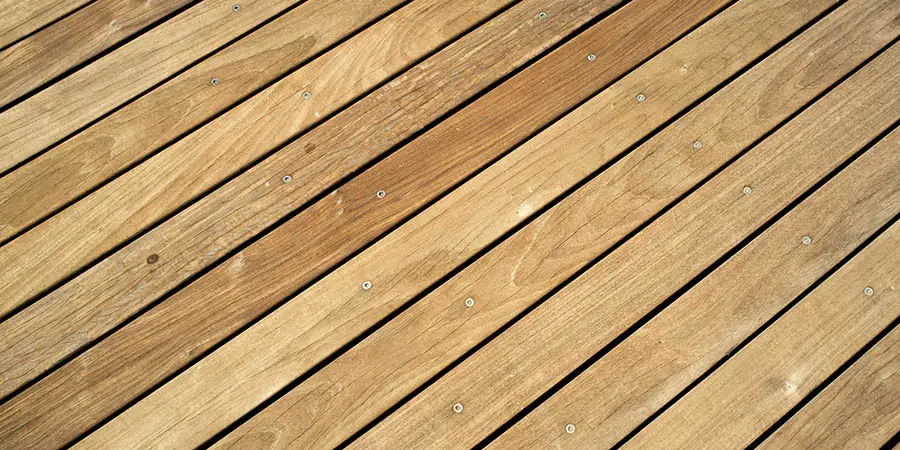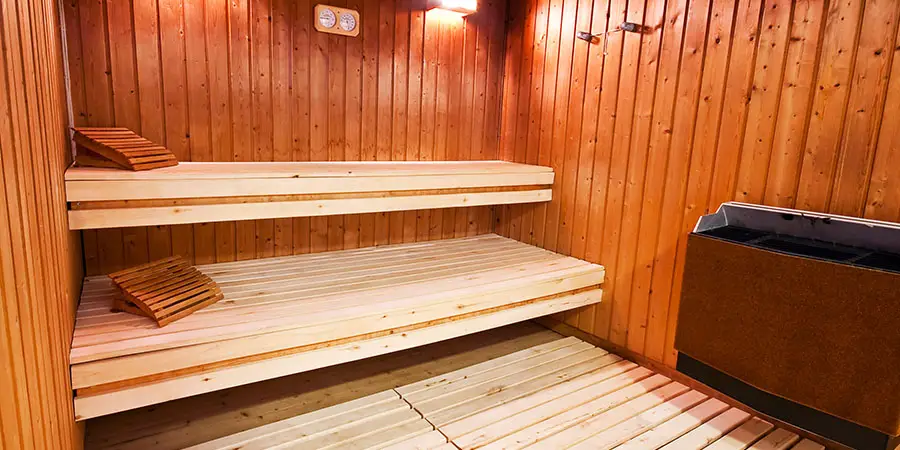If you’re building or designing your own sauna, you’ll want to pick the right wood to absorb the heat and moisture during every use. Starting out with the right wood can really help your sauna perform well and last longer. One question you’ll have while in this process is whether or not pressure-treated wood might be a good git, because it is known to help keep out rot and fungus.
Pressure-treated wood should never be used in the interior of a sauna. Pressure-treated wood is treated with various chemicals that when heated can emit toxic fumes. It is okay to use it for the exterior or base of a sauna, however, this is only recommended if it is located outdoors.
You can use several different types of wood, but using any kind of pressure-treated wood is not recommended in any way.
What’s the Purpose of Pressure Treating Wood?

When you buy pressure-treated wood, it has gone through a very intense process of being coated in chemicals that act as preservatives for the wod, and those chemicals have then been forced into the wood in a pressure chamber. (Hence the name pressure-treated.) This process helps the wood last longer, but at the cost of embedding it with complex chemicals that can be harmful to humans.
People will commonly use the process to help protect the wood from insects that chew through the wood, like termites and other bugs. It also helps protect the wood from fungal decay, which can be the downfall to timber life, especially when placed outside. Any wood that comes in contact with a damp, outdoor environment will need to be pressure treated, otherwise it will quickly start to rot or otherwise deteriorate.
Why You Should Avoid Pressure Treated Wood for a Sauna Interior

The only time you should use pressure-treated wood for your sauna is for the base outside on the ground. Wood will rot when it comes in contact with wet dirt, so this is especially important if you have an outdoor sauna. For most indoor saunas, you don’t need any pressure-treated wood, and it is not recommended.
For the interior wood, you want something untreated, because the “breathing” of the wood during normal sauna use will leech chemicals into the air. This is especially easy to understand in the case of steam saunas, where it probably makes sense to you that the steam in the air can soak into the wood to some degree, before eventually coming back out. That’s how chemicals can get out and come in contact with you, if you’re using pressure treated wood. Here are the best wood types to choose from:
- Red Cedar- This gives off a very intense smell that is typically associated with saunas. It has a natural resistance to moisture and does not expand or contract as much, helping to prevent splitting and cracking. This makes it one of the most appealing wood choices for sauna builders.
- Basswood- This is a smooth-grained wood that is perfect for people with allergies. It is hypoallergenic, which makes it great for people with sensitive skin too. It’s a quality wood that’s also budget-friendly.
- Hemlock or Pine- These are great wood choices if you’re on a budget. However, if you use these woods there’ll be more knots in the wood, and it may be a little more likely to warp over time.
Which wood is the best choice for you? If you’re building your own sauna, then maybe you’ve already accepted that this is a luxury, not a need, and you’re setting aside a good amount of money to reflect that value. If that’s the case, you probably want to go with the traditional (though a little more expensive) option of using Red Cedar.
However, if you’re just trying to do this as a sort of side project, and you really want to do it at extremely low cost, you can go right for Pine, or you can even use other woods if you’re just doing this to get started and you plan to maybe upgrade the sauna over time. You can easily got to your local Home Depot or lumber store and ask them what wood they recommend would be the lowest cost way to do this, but just be sure to not get pressure treated wood!
Which Components (if any) of a Sauna Should Be Made from Pressure Treated Wood?
Most people choose to put saunas on cement slabs if they plan on creating or making an outdoor sauna. However, if that is something you do not want to do, you can easily put a wood deck down. This is the only part of the sauna that should be pressure treated. Average wood will rot when kept on wet soil. This will ruin your sauna quickly.
In some cases it may be appropriate to use a layer of pressure treated wood on the outside, but most people will not need this unless they’re in very extreme conditions. Maybe if you’re in tropical latitudes or a literal rainforest, but for a backyard sauna you won’t need a pressure treated exterior excepting maybe the base.
In Conclusion
Starting out with the right wood means you will have a sauna that lasts for years as long as you maintain it. They can be an excellent investment, and they are fun to build on your own. Never use pressure-treated wood only use raw, natural wood that can absorb the moisture and heat without emitting possibly toxic fumes. Raw wood still gives off fumes but none of them will be toxic to your health and can actually have some amazing health benefits. Not to mention that comforting smell!
